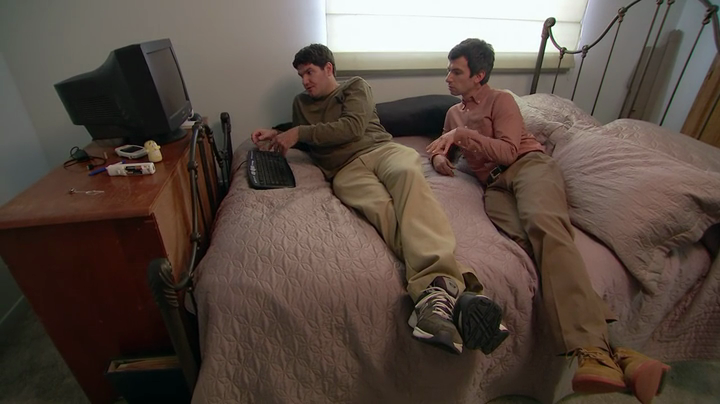What is reality television? The genre that started life on MTV with The Real World and grew insanely popular with Survivor has morphed into shows like Keeping Up With the Kardashians, Duck Dynasty, and Here Comes Honey Boo Boo. These latter shows star “real” people, in that the leads are playing themselves, but feature scripted scenarios with improvisation rather than true real-life stories most of the time.
One of the most fascinating things about Nathan For You, Nathan Fielder’s brilliant comedy/social experiment/magic trick, is the way that the show is always aware of it’s reality, as well as its artificiality. The fact that there is a camera crew present in each scene is never lost, and explains why so many of Nathan’s subjects are willing to go along with his patently absurd ideas. But the subjects themselves are absolutely real, and the way that they react to Nathan’s plans with attempts at optimism (for the cameras) makes for a lot of the show’s humor.
The character of Nathan, too, straddles the line between the real and the unreal. There’s a certain awkwardness to Nathan Fielder that seems too natural to be a full act, but Fielder is obviously channeling those traits into a character that he can plan a show around. The fictional version of Nathan is the loneliest man in the world, somebody who sees relationship-potential in almost every woman he meets, and a new friend in every man. It’s an angle that could derail practically any of his plans, if he lets it.
It is because of this expert mix of reality and fiction that, even in its weaker episodes, Nathan For You is worth a watch. Season 3 is likely the weakest the show has had so far, with about half the episodes consisting of what felt like failed experiments and dead-ends. Such promising ideas as the motorcycle traffic pick-up company and the women’s clothing store man-cave fizzle out before they have their time to shine, and even some of the more hilarious schemes, such as the obese “horsey rides,” are good for a couple of sight gags and not much more.
There were, however, a handful of episodes that were absolute classics. The premiere, featuring a small Pasadena electronics store taking advantage of Best Buy’s price matching policy, is golden. While it doesn’t go as insanely off the rails as some of the show’s best segments, the plan, involving a dress code for the sale and a guard-alligator, is brilliantly conceived. The decision to have the store-owner go to a psychiatrist to be declared insane, simply by reciting exactly what Nathan did in his store. is a master-stroke.
The season has a couple of episodes that show Nathan’s ability to trick the media, as well. The Movement, in which Nathan completely fabricates a workout plan around helping people move, ingeniously exposes the media’s willingness to go along with a story without fact-checking. It feels a bit like a retread of season 1’s petting zoo video, but succeeds largely due to how successful Nathan’s spokesman becomes. Better is the ingenious finale “The Hero,” in which Nathan hides a man away for two weeks, assumes his identity (make-up, costume, mannerisms, and all), plans a very public high-wire walk between two downtown LA buildings, and starts a relationship with a woman as the other man. By the time Nathan, in disguise, completes the high-wire walk (nine times in a row, in fact), his mark is actually a hero, giving a speech to a huge crowd in downtown LA, kissing his new girlfriend (who is completely unaware that the man she previously met was a different person), and getting national media attention for it.
But perhaps the most fascinating episode of the season involved a scheme to allow patrons to smoke in a bar by pretending they’re in a theatrical production. It is impossible to know how much of this scheme was planned ahead of time, but the “success” of Nathan’s “play” leads him to hiring actors to memorize every moment of an entire night and perform them together, in-sync. The results, shown side-by-side, are uncannily similar. While it is played as if Nathan just stumbled onto something that the theater crowd inexplicably picked up on, the stunt is ultimately an incredible piece of performance art. Intentionally or not, the episode poses questions on the nature of art. Does intent matter? Is the recognition of moments in every-day life art in itself? Is recreating off-the-cuff moments a way of memorializing them and giving them value, or a devaluation of the spontaneous?
These last two examples show the true strength of Nathan For You. Sure, even the weakest bits can work simply by being funny enough. But when the show is really rolling, humor is secondary at best to what is revealed about the world around us. While so many reality shows are simply hacky writing presented as reality, Nathan For You is real art presented as a spoof.
